Souleiado: Heritage Series
The sort of miraculous story of France's only surviving heritage block-print factory
Hello and welcome to this week’s edition of The Bell!
When I visited the Souleiado museum and workshop in Tarascon, Provence, the only thing I cared about was a friendly neighborhood cat.
To be fair, I was nine years old.
Now, that museum and attached shop are high on my list of heritage craft-related destinations that I’d love to visit as an adult.
Souleiado is a French manufacturer of Indian-style block-print textiles. What was I doing at the Souleiado museum in Tarascon petting cats as a child? My mom was familiar with the fabrics and put the iconic Provençal workshop on the trip itinerary.
History of block-print textiles in France
So! There’s a lot of drama in the history of “Indienne” fabrics in Provence! All credit goes to Souleiado.com for this historical information; I’m interpreting it here in my own words.
The art of block printing in France began in Marseille in 1648, when local entrepreneurs started copying the style of imported Indian block print textiles at a lower cost. But the quality wasn’t great, since they hadn’t been trained or actually visited India to see how the process was done.
In 1672, these entrepreneurs invited Armenian artisans to teach them how to correctly make textiles that would be colorful, beautiful, and get more vibrant—instead of fading, as the early attempts had—with every wash.
After that, painted or printed textiles spread to Avignon, Arles, and Nimes.
But shortly after this craft got off the ground in France, artisans making textiles in the traditional French way got mad about their new block-printing competitors and actually convinced King Louis XIV to make a law in 1686 that prohibited the import of Indian fabrics, the production of fabrics in the Indian style on French soil, and the trade and use of such fabrics. This law wasn’t repealed for 74 years!
“Indiennes” didn’t disappear, of course—they just went underground. After all the printing blocks in Marseille were broken in a public square in 1689 (like I said, drama!), producers fled to Avignon (which was protected under papal law and not subject to the King’s prohibition) and Tuscany.
Besides Avignon, and eventually Marseille where restrictions loosened, the prohibition on these textiles was strictly enforced. In 1726, a law sentenced fabric smugglers to three years as galley slaves, and smugglers who carried weapons would be sentenced to death.
But smuggling continued because the trend had caught on and demand for these fabrics was high. Fabrics smuggled from Marseille to Aix-en-Provence were stored in the houses of nobles, who police couldn’t arrest.
Eventually, a riot broke out against the prohibition on October 18th, 1736 in Aix, and the rioters won. After that, the law was essentially unenforced, and fifteen clandestine factories opened by 1754.
The prohibition officially ended in 1759 and the popularity of “Indienne” textiles reached its peak in the 1790s. They came to be considered the traditional clothing of the Provençal people.
But by the beginning of the 19th century, English and Alsatian fabrics had entered the scene as competitors, and fashions had changed. The people of Provence stopped wearing their traditional outfits and opted for more modern clothing. The “Indienne” factories gradually closed until only one was left standing in the 20th century: Souleiado, in Tarascon.
History of Souleiado
The Souleiado fabric was founded in 1806 by Jean Jourdan in a former convent in the center of Tarascon. But he wasn’t getting rich; the popularity of “Indiennes” had already begun to decline. In 1821 he sold the convent to the town and moved his factory to a nearby mansion (a smaller space, I’m assuming). His son Matthieu succeeded him and managed the factory until his death in 1882.
At that point, management passed to Paul Véran, who was determined to preserve a production site. As other factories closed, Véran collected their printing blocks and designs.
When he died in 1916, a chemist named Charles Henri Deméry fell in love with the factory and decided to save it—and it’s thanks to him and Véran that Souleiado exists today.
Deméry sold the factory to his nephew, also named Charles Deméry, in 1937. Deméry the younger was a civil engineer who came to Provence from Paris to recover from an illness and also fell in love with the business. He was the one who named the brand Souleiado in 1939.
Enter: his wife, Hélène, a gifted dressmaker. She completely updated the “Indienne” designs for the modern era. Her first big break was in 1947, when a good customer, Madame Vachon from Saint-Tropez, asked her to develop a dress collection. In 1950, an Italian customer had the idea of opening the first Souleiado boutique.
Tragically, Hélène was killed in a car accident in 1951, but her husband walked away unharmed. He carried on without her as the company experienced explosive growth in the early 1950s.
Sales stagnated in the 60s, but the arrival of designer Chantal Thomass in the late 1970s revived the brand. By the time Charles Deméry died in 1986, the brand had over 2,000 points of sale worldwide.
Sadly, his successors didn’t have the same vision and work ethic, and the factory languished (comparatively) in the following handful of decades.
(Souleiado must not have languished in popularity that much, because my mom sought the tiny town of Tarascon out in the year 2000, all the way from Nebraska, as a kind of pilgrimage.)
In April 2009, Souleiado was taken over by Daniel and Stéphane Richard, Provence natives, who decided to bring it back to life. Their new team immersed itself in a treasure hunt through the brand’s incredible 360-year-old heritage, with its archives of fabrics, hundreds of drawings, and close to 50,000 printing blocks.
Today, Souleiado is thriving, with an e-commerce site, international shipping, and an expanded product line that includes porcelain (see below). You can view many of the heritage archives in the brand’s museum in Tarascon, France.
This blog post includes a lot of great photos taken at the museum, if you want a preview.
Souleiado and Princess Diana
In the final years of Deméry at the helm of the company, Princess Diana bought and repeatedly carried the “Adiana Pompadour Bag” in her early years of marriage to (then) Prince Charles. Fun fact: she collaborated with Souleiado on the design of the bag.
It was unavailable to buy for many years, but during the rebirth of the Diana style craze in the late 2010s/early 2020s, the brand brought back the Adiana bag in several dimensions and color ways, including the original, which is now called “Printemps.” It retails for €139. Do I need to buy it? I think I might!
Souleiado homeware
The tabletop textiles are really something special: tablecloths, napkins, and placemats, all in the bright, straight-from-nature colors of the South of France. I wouldn’t even know how to choose one; they’re all so happy. But if pressed, I’m especially drawn to the yellows right now.
But then, I consider a picnic atop this somewhat neutral and totally traditional tablecloth and wonder if that’s the direction to go. I mean, has there ever been a more French scene than the above? Ever???
Souleiado has also released a limited collection of microwave- and dishwasher-safe porcelain dishes, which I find so adorable and want for my French country house! I’m particularly eyeing these espresso cups and matching dessert plates in the “Fleur d’Arles” pattern.
My Souleiado fashion picks
Of course, the brand has stayed true to its roots and continues to design women’s clothes. They have also branched into men’s, children’s, and women’s accessories. Here’s what my heart is adding to cart today at Souleiado!
Marine blue and ecru Gisele "Merveilleuse" jacket - reversible!!
Red Fleurs d’Arles basket - when you’re looking for something more unique than the classic straw French market tote
Let me know: was this heritage brand on your radar before? Do you own any Souleiado pieces and/or have I inspired you to shop for some?
Talk to you Friday with this week’s recs.
xx Jane

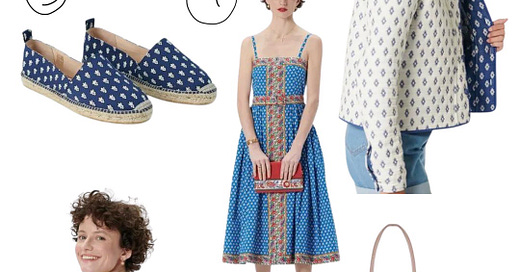


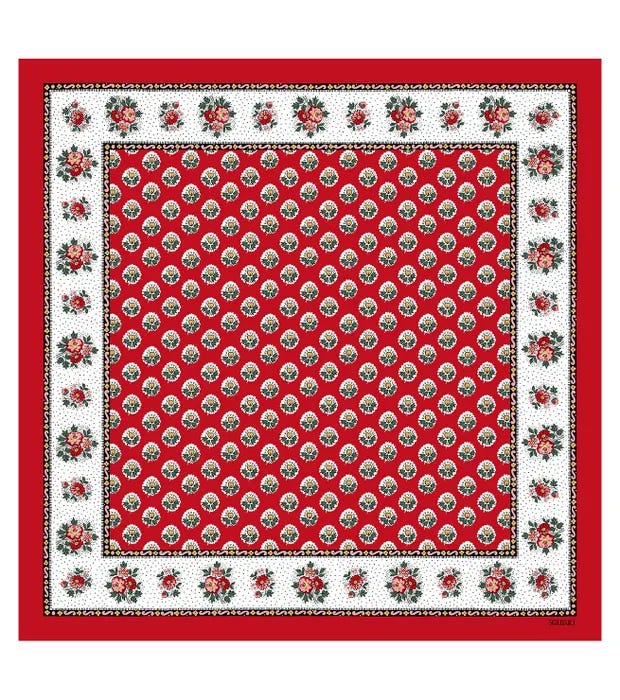
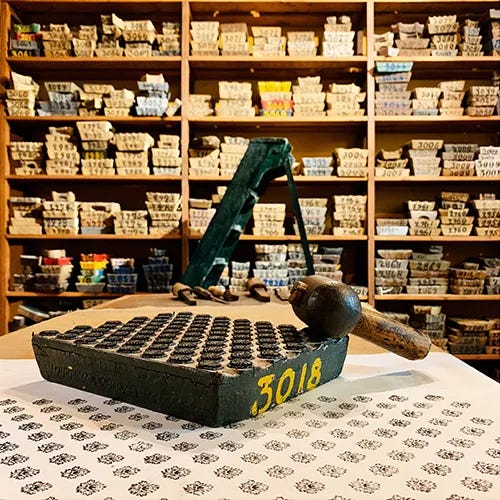
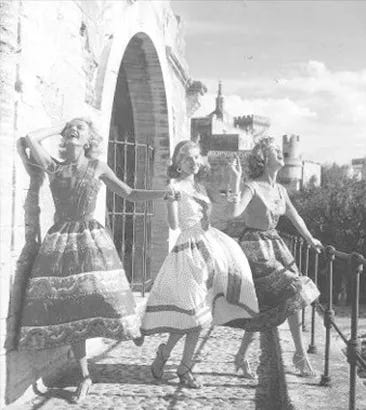
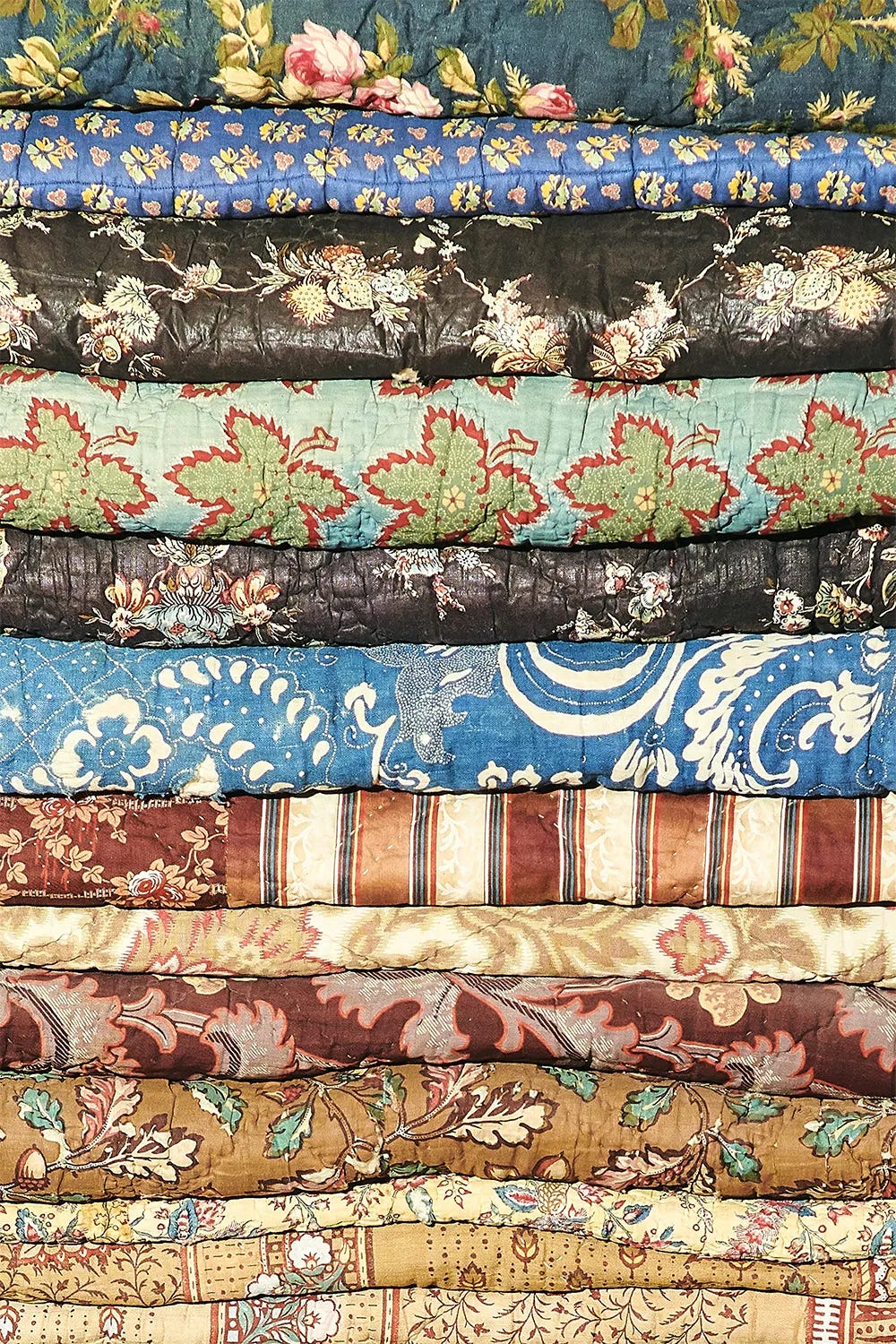
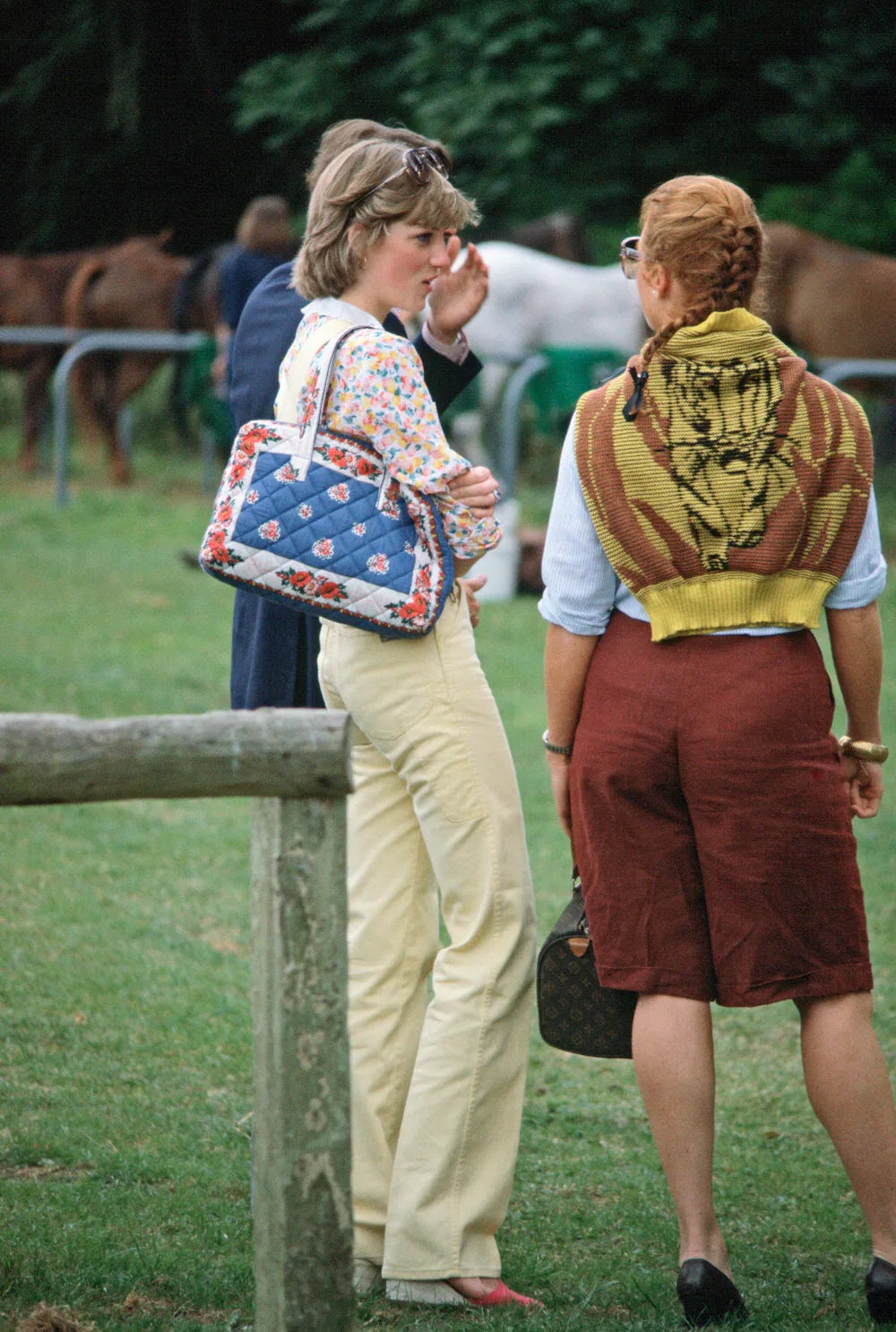
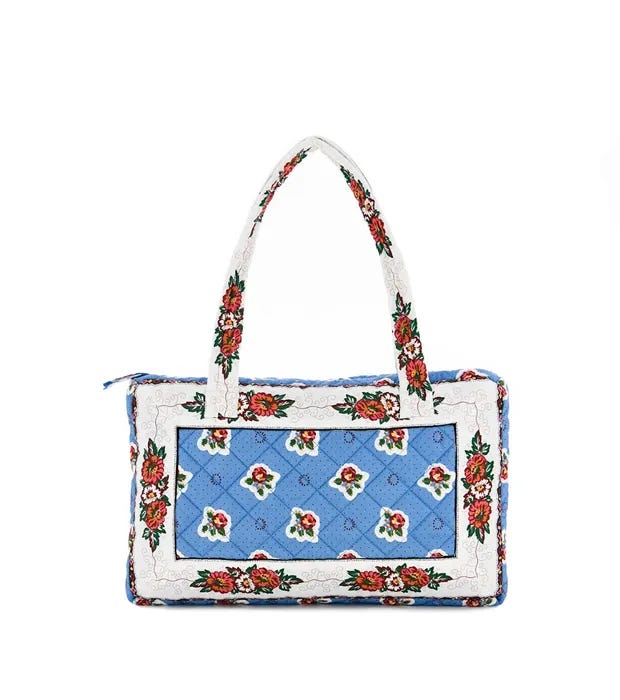
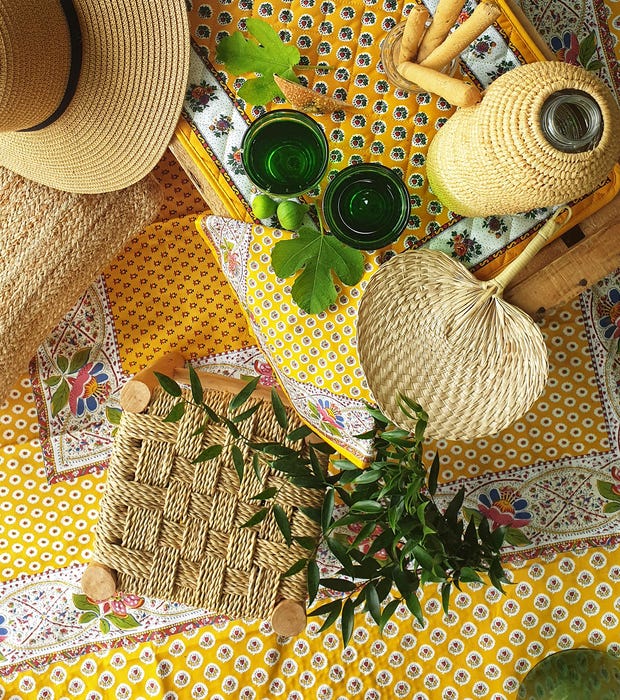
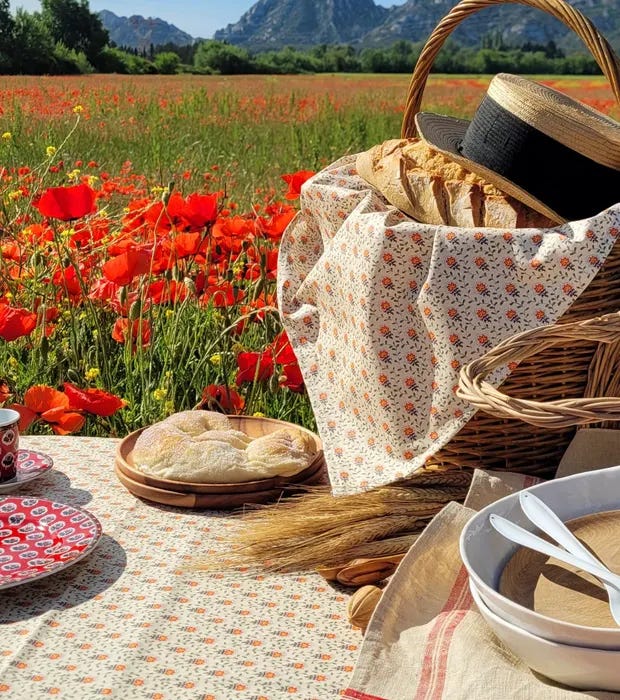
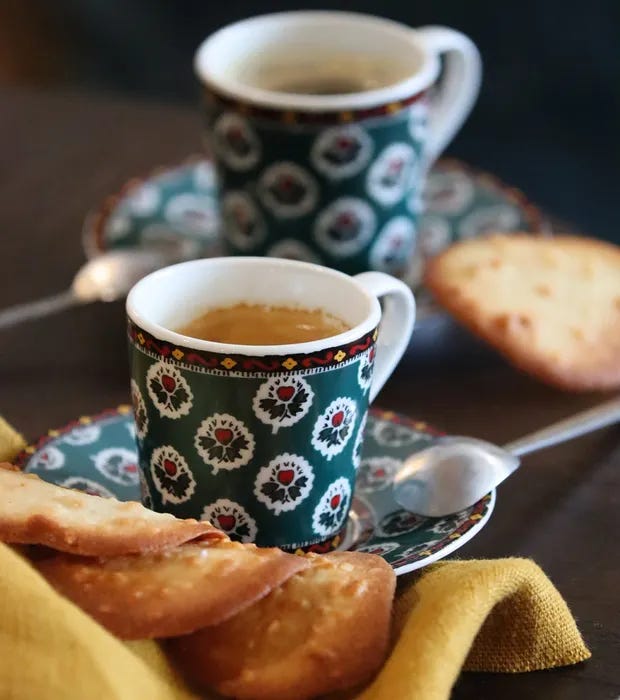

Wish we could order from a boutique here in the states!
What a happy trip down memory lane! Add to the history, the 'two Pierres,' credited for making Souleiado fabrics recognizable in America when they opened their namesake boutique, Pierre Deux, in New York, and later in other cities around the country. They sold Souleiado fabric exclusively - by the yard, as well as employing a team of wonderful seamstresses who whipped up tote bags, table linens, simple dresses, and even pleated fabric-covered lamp shades, as well as custom orders - all done in brilliant combinations of Souleiado prints and border prints.